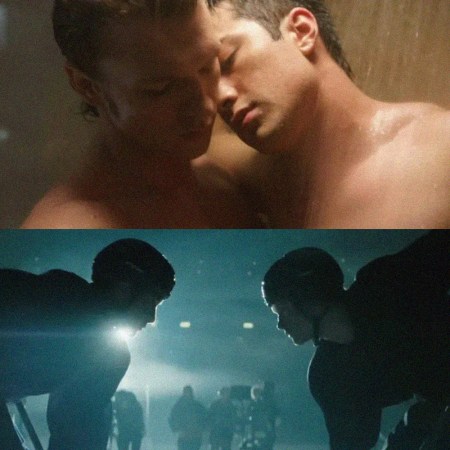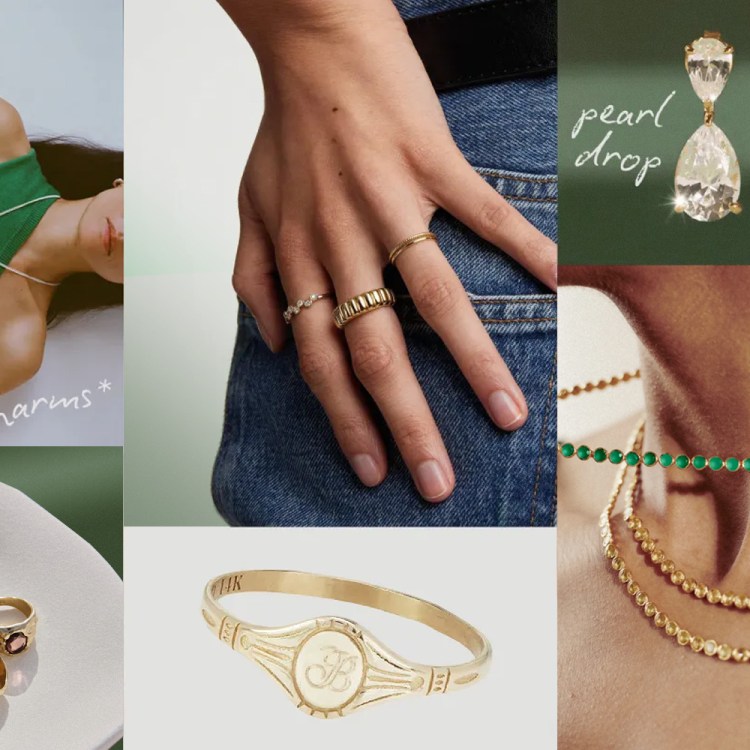We are in the middle of a recycling crisis. Long story short, America used to send a significant portion of its plastic, paper and other reusable waste to China. Now, we’re being cut off.
You’ve probably seen an apocalyptic headline or two. The Atlantic went with “Is This the End of Recycling?” Gizmodo kept it short with “Recycling Is Broken.” The Guardian declared a “‘Moment of Reckoning.’”
Yes, the infrastructure problems are above our individual pay grades. But they’ve awoken all the questions we’ve harbored for decades, from “Can you recycle pizza boxes?” to “Is recycling even worth it?”
Today, we answer those queries and more with a practical guide featuring the wisdom of Randy Hartmann, a 30-year waste-management vet. Hartmann currently serves as the Senior Director of Affiliate Operations at Keep America Beautiful, a three-pronged national nonprofit with a mission to “End Littering, Improve Recycling and Beautify America’s Communities.”
Below, we’ve broken up the advice into four sections: The Big Question, The Smaller Questions, The Questions You Always Wanted to Ask and a brief Recycling Cheat Sheet. All offer actionable advice, whether it’s talking points for skeptical coworkers or help when you’re looking back and forth between the trash and recycling and wondering where to put that dang bottle.
The one big takeaway? We’re all doing something wrong.
The Big Question
What does Hartmann say about the efficacy of recycling today? Or more importantly, how does he respond to the suggestion that we might be experiencing the end of recycling in America?
“I think the important part to know is, this is not the first time these recycling markets have dipped and the impact of the global markets have influenced what we do here in the United States,” says Hartmann. “It’s probably the sixth time since I’ve been in the industry that this has occurred. At the end of the day, recycling is important. It is a good thing to do for the environment. It creates jobs. It’s just our infrastructure needs to catch up to the current market conditions, and that will happen. We’ve just got to give it time.”
The Smaller Questions
Can I throw everything in the bin? Or do I still have to split up my recycling?
Most of us, especially those in metropolitan areas, have what’s called single stream recycling (aka throw-everything-in-the-bin recycling). As FiveThirtyEight cites, by 2014, these programs covered 80 percent of America. But they also note “about 25 percent of the stuff we try to recycle is too contaminated to go anywhere but the landfill,” as opposed to 7 percent a decade ago. Hartmann describes it this way: “We went from this little 18-gallon bin, to now a 90-gallon cart that’s as big as your trash. What’s happening is, people are wishful. They want to recycle. They read on a label, oh, it’s recyclable. Whether it is or it isn’t recyclable in the curb is the question. Some things shouldn’t go in that cart.”
How do we combat this?
The single most important thing is to look up your local recycling requirements, because regulations change wildly from state to state and city to city. “The worst is not having any recycling available to you at all,” says Hartmann, which is more common than you might think. We can’t link to every city, but here are the details for New York, Chicago, Los Angeles and San Francisco.
What’s the second most important thing?
Keep it simple. “Do your bottles, cans, paper, metal and plastic. Don’t get extravagant. Yes, everything can pretty much be recycled, but some of it can’t happen at the curb,” says Hartmann. “A good example is your plastic grocery bag, or your dry cleaner bag — film plastic. That can’t go in the curb because it gets into separation equipment and clogs it up. Then, you’ve got to shut it down and clean it out. As that equipment gets clogged up, recycling just runs through and ends up becoming garbage.” Basically, if you’re adding items that shouldn’t be recycled to your bin, you could be sabotaging the whole process.
The Questions You Always Wanted to Ask
How clean does an item have to be before going in the recycling?
“Basically, remove the excess food. From an environmental standpoint, no, you don’t want to sit there and scrub it, wash it and add more wastewater to the process. But we don’t want it full of excess food as well. A glass jar going into a melting and smelting process, if it’s got a tiny bit of food in there, it’s not going to ruin it.”
Should I bag my recycling?
No. As Hartmann says, this might be the most common mistake. “All recyclables should go into the container loose. They shouldn’t be boxed up. They shouldn’t be bagged up. What happens in that situation is it runs directly through the conveyor belt and it goes out the back, and it ends up being landfilled.” Sure, your city might accept it bagged up, but keep it loose if it’s allowed. For example, New York City accepts “recyclable materials curbside in clear bags or labeled recycling bins,” and offers free bin decals.
What do those numbers between the arrows mean?
“I really hesitated to even bring it up, because those numbers do not indicate whether it’s recyclable or not. It indicates the type of resin that was used to make that product,” says Hartmann. “Typically, anything that is HDPE (2) or PET (1) can be recycled, and in the plastic world, those two resins have the highest recyclability and the highest market value.”
What’s something I should look for in my local regulations?
Double-check what to do with glass. “Some programs take it, some don’t, and the reason is the glass industry doesn’t want paper or other materials mixed in with the glass, and vice versa. You can imagine what that highly abrasive broken piece of glass would do if you’re trying to manufacture a sheet of paper.”
What’s a recycling issue no one talks about?
Public space recycling, especially in cities and spaces you’re not familiar with. “We know about one third of all beverage containers consumed are consumed on the go. But when you go to a public space, you don’t know: 1) If they even have a recycling program, 2) if they do, what’s accepted and 3) where to find the bin. It’s just as important to recycle there as it is at home.” So next time you’re about to toss something in a recycling bin, double-check the lid to make sure it accepts that particular item.
And the number-one thing to never put in your recycling bin is …
“NiCad batteries, or rechargeable batteries. They’re one of the most dangerous things to put in that cart, because that can cause a fire in a material recoveries facility and shut that facility down for months, years or maybe even permanently, causing potential harm to the workers and the equipment there.”
Hartmann’s Recycling Cheat Sheet
Aka 10 items you’ve never been sure whether to recycle or not
- Plastic bottle with a cap: Cap on and recycle it.
- Envelopes with a see-through plastic panel: Recycle it with paper.
- Sriracha bottle, or other hot sauce in a plastic bottle: If it’s composite materials, it becomes more challenging, but if it’s got a number one or two on it, I would throw it in the recycling bin. Otherwise, if in doubt, I would throw it out.
- Styrofoam: It’s very locally dependent and very difficult to recycle in the curb. That would be one that would probably not be easily done.
- Light bulbs: Light bulbs, especially if they contain mercury, should not be thrown away, and they should not be put in the recycling container. A lot of our hardware stores, Home Depot and Lowe’s, actually have programs to take those back. They should be taken to a qualified place that can handle them.
- Mirrors: Mirrors cannot be recycled.
- Shredded paper: No, it should not go on the curb for the same reason why hoses and wires don’t go into a recycling process. The best thing to do with shredded paper is compost it or use it for animal bedding if you’re out there in a rural area.
- Orange juice cartons: For the most part, yes. But again, that’s one of those that you need to check locally. Cartons, both food and beverage, with the gabled top like the orange carton, can be recycled in a lot of programs today. They have about 60 percent coverage across the country.
- Scrap wood: The best thing to do is reuse. Potentially, if you can grind it and mulch it, that’s an option for it, but no, that’s not something that should go in a recycling bin.
- Pizza boxes: Yes, it’s made out of paper. It can be recycled and it should be recycled. Most corrugated cardboard manufacturers want that cardboard and they can recycle it. Now, if it’s got half a pizza in it, no, throw it away. They can’t recycle the pizza. Paper manufacturing is a waterborne process, so by the same token, if you’ve got a pizza box and it’s one of those greasy pizzas, and you can almost ring out the corrugated cardboard of the grease, no, throw that away. That is not something that should go in the recycling stream.
In the end, one of the most effective ways a single person can help the recycling system has nothing to do with recycling. It doesn’t have anything to do with reducing or reusing, either. As The Atlantic writes, the city of San Francisco “is trying to get residents to think of a fourth r … ‘refuse.’”
Instead of wondering whether to recycle that Coke bottle with the cap on or off, think about whether or not you need that Coke at all.
—-
Main photo: NeONBRAND on Unsplash
The Charge will help you move better, think clearer and stay in the game longer. Subscribe to our wellness newsletter today.






















